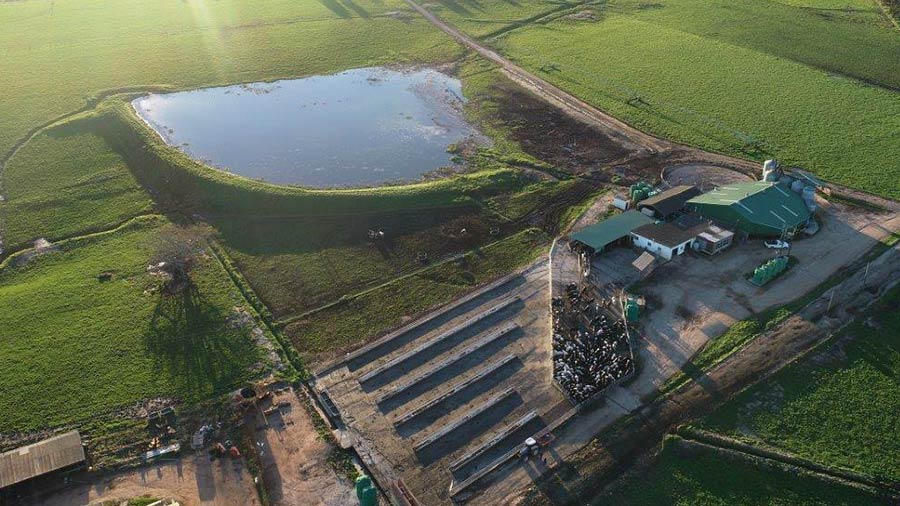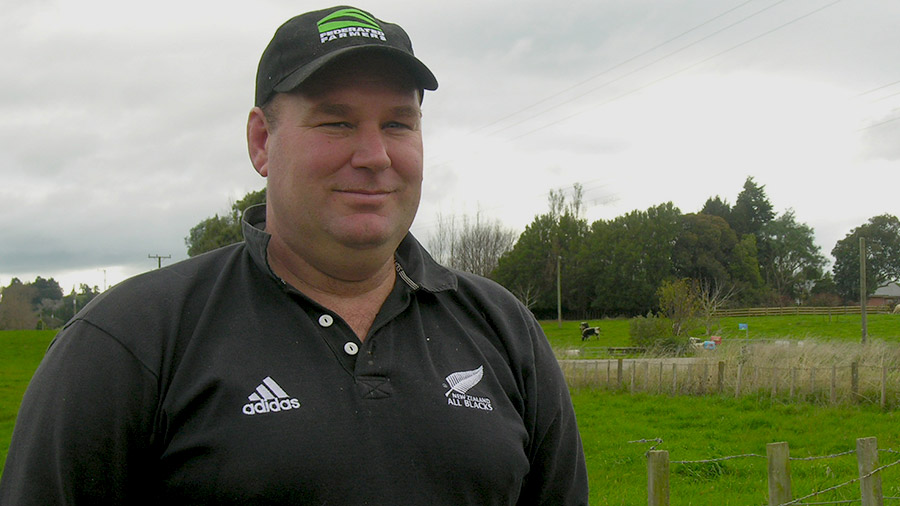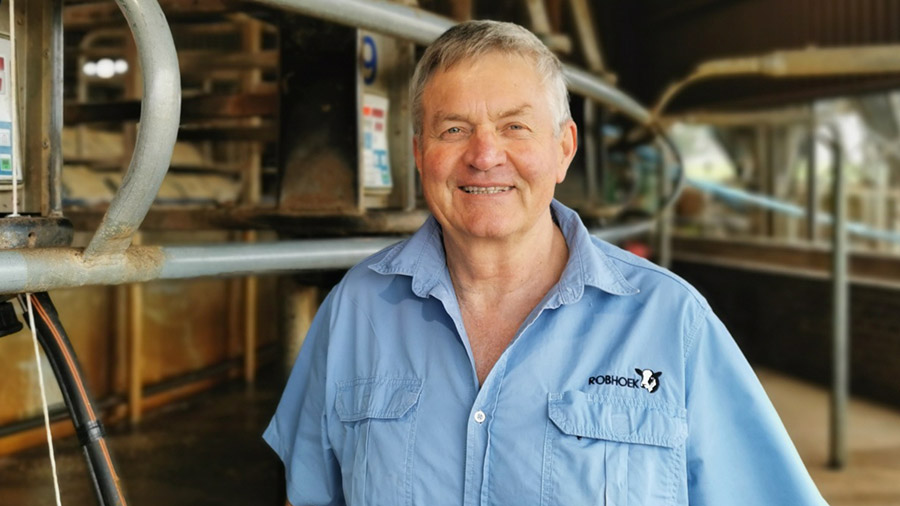How new dairy tech is being used globally by farmers
 Nigel Lok's farm © AfiMilk
Nigel Lok's farm © AfiMilk Two farmers shared their experiences of using some of the latest dairy technology on their farms at a DairyTech grazing webinar (9 February).
Find out how the two technologies – satellite pasture mapping and feed software – worked and how they improved herd management.
See also: How mapping is saving a livestock farmer £2,120 on lime
Andrew Hoggard, Kiwitea, New Zealand

Andrew Hoggard © Federated Farmers NZ
New Zealand dairy farmer Andrew Hoggard is saving time by using a satellite map to measure and record pasture covers automatically.
Mr Hoggard, who milks 560 cows in Kiwitea, New Zealand, previously used a grass meter on the quad bike to measure grass covers. This would take one day every week.
Farm facts
- Farms 300ha (741 acres)
- Milking platform of 220ha (543 acres)
- Grows 20ha of maize (49 acres)
- Supplies milk to Fonterra
- Milks 560 cows through a 44-point rotary parlour
- Andrew is president of Federated Farmers (the equivalent of NFU)
- Split-block calving; 100 calving in the autumn and 460 in the spring
“At busy times of the year, we would put it on the back burner at times, and went by our gut feel or ‘eyeometer’,” admits Mr Hoggard.
He is now using LIC’s Satellite Pasture and Cover Evaluation (Space) service, which uses images taken by satellites to measure pasture. The results are sent by email.
The information is used to assess the order in which fields should be grazed, as well as round length, the area provided and supplementation required – with maize silage fed in times of grass deficits to help maintain cow condition.
Mr Hoggard says the technology is largely accurate on grass paddocks, but struggles to measure very high covers.
For example, his six maize fields are about 1.8m tall, but Space calculates that covers are between 3,250-2,850kg dry matter (DM)/ha – much shorter than actual.
Grass covers are double-checked by eye to ensure measurements are not way out of kilter.
“Sometimes [in the year] it seems to be out a little bit, but the key thing is that the order of the paddock is correct.”
LIC is planning on bringing this technology to the UK and is currently recruiting trial farms. Farmers Weekly has been asked to be kept up to date of progress.
Production figures
- 420kg Milk solids production a cow
- 1,060kg Milk solids producted/ha
- 12t DM/ha Average grass growth
- 2km Furthest cows have to walk
Nigel Lok, Tsitsikamma, Eastern Cape, South Africa

Nigel Lok © AfiMilk
Grass-based farmer Nigel Lok has cut concentrates by 11% and increased energy corrected milk by 6% a cow, since implementing computerised software to feed cows individually.
The Afimilk system allocates concentrates according to energy-corrected milk (4% fat and 3.4% protein), taking into account body weight, body condition score, stage of lactation and lactation number.
Farm facts
- Farms 330 ha (815 acres)
- Milks 1,200 cows; split block
- Twice-a-day milking
- Supplies milk to Woodlands Dairy, paid on milk solids
- 600 calving in the spring and the other half in the autumn (February to April and July to September)
- Milks through a 60-bale rotary
- Annual rainfall of 1,000mm
- 14 centre irrigation pivots
- 56ha maize grown (138 acres)
- Zero tillage
Milk meters are used at each bale to measure butterfat, protein, lactose, milk urea and somatic cell counts. Scales monitor cow weights at the parlour exit.
Cows are fitted with collars to individually identify them, as well as detect heats and rumination.
This data is used to prescribe the right amount of feed for individuals and tailor rations accordingly, with maize, soya and minerals fed in the parlour. For example, close-to-calving cows are also given ionic salts and lower-condition cows will be fed more.
Cows are run as three herds – first lactation, higher production and late lactation – to aid management.
As cow numbers have increased, there has been a tendency to manage cows in groups or herds, said Mr Lok. However, he said there are clear efficiency benefits to managing cows individually.
Production figures
- 19t DM/ha Average grass grown (using pivots)
- 22t DM/ha Average maize yield
- 385 days Calving interval
- 1.8 Average straws used/pregnancy
- 18p Saving a cow a day in concentrate costs (ZAR3.60)
